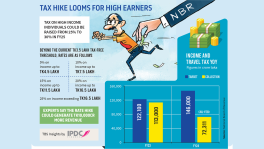How efficiency, renewable energy can help RMG industry retain post-LDC competitiveness
How can the RMG sector move forward towards energy efficiency in the post-LDC era?

In what is the first of its kind achievement, the Bangladesh Garment Manufacturers and Exporters Association (BGMEA) has, of late, received the 'USGBC Leadership Award' from the United States Green Building Council (USGBC) for the association's sustained efforts to strive for green development. It's indeed a well-deserved recognition for the sector, contributing to meet the global demand for apparel.
The sector's endeavour to promote green development for years, led by BGMEA, has been nothing short of remarkable. More than 140 ready-made garment (RMG) establishments are already certified under the Leadership in Energy and Environmental Design (LEED) and reportedly, several hundred RMGs are expected to achieve the feat in the foreseeable future.
On the other hand, BGMEA has joined the Fashion Charter for Climate Action, convened by the United Nations Framework Convention on Climate Change (UNFCCC) to contain the greenhouse gas (GHG) emissions of the RMG sector by 30% within 2030. This is a testament to the commitment that the leadership of the sector has to keep sustainability at the core of the production process to lower the pace of global climate change.
Truth be told, the international reputation and commitment for sustainability will remain central due to the country's reliance on the RMG sector, which contributes around 11% to national GDP and a whopping 84% to the annual export. The sector, according to media reports, accommodates over 4 million people and supports their livelihood.
As the RMG sector is the largest source of foreign earnings, it is, certainly, exposed to international competition. The sector is, therefore, in need of persistent innovation or adaptation to remain competitive in the global market.
Other reasons also warrant a strong strategy for the sector to compete globally. For instance, Bangladesh is on course to reach the status of a developing country in 2026, graduating from the group of least developed countries. Now that the economic status of the country would change, some of the facilities that we are currently enjoying on the export front may not be valid anymore after 2026. As a logical consequence, Bangladesh's competition with other apparel suppliers would increase.
A report published in this newspaper several months ago highlighted that following LDC graduation, shirts produced in Bangladesh would be 25% costlier than the prevailing scenario. Other media reported that the exports of local apparel to Japan from Bangladesh would be expensive compared to the apparel of Vietnam.
While all these are based on business-as-usual situations and certain assumptions, the reality would depend on how we prepare for the post-LDC era and what strategies we choose to follow in light of the projected exports beyond 2026.
The sector also seems to be well-positioned to minimise the mentioned challenges as it already has commitments, such as the one with the UNFCCC fashion charter. Nevertheless, to realise the goal, industries of the sector shall pursue activities on the ground. In that vein, enhancing energy efficiency and other resource efficiency are the measures that could both reduce cost and contain emissions.
While increasing energy and resource efficiency costs money up-front, the initial capital outlay is paid back within a short period due to energy and resource savings.
Notably, investments in energy and resource efficiency improvements in many cases have a pay-back period of around three years.
Some of the investments are recoverable in less than a year. These make efficiency improvement an attractive starting point to reduce the cost to boost business competitiveness.
Well, efficiency improvement is a good idea but energy savings, i.e., cost reduction, would hinge on how the money saved from efficiency is being used later on. If not properly taken care of, the rebound effect may rather result in increased cost.
On top of these, energy and resource conservation comes at no cost. Even when investment is necessary for conservation, it is a very tiny part of capital investment for energy efficiency and is mainly used to conduct campaigns to stimulate behavioural change and raise awareness among the staff of industries. The awareness could help address some of the root causes of rebound effects too.
The role of energy efficiency and conservation can be best illustrated if the rising trend of electricity and other energy prices of the country are closely observed.
Gradual phasing out of energy subsidies may, further, necessitate upward price adjustment of electricity and different fuels in the coming days.
Since industrial consumers normally pay some of the highest prices for electricity in the country, energy efficiency and conservation can relieve significant pressure on energy costs for them.
Moreover, along with the front-loading actions to reduce energy wastage, industry managements should look into the possibility of harnessing cheap energy from solar rooftop projects under the national net metering guidelines.
Per unit electricity production cost from solar energy would be much less than the slabs of electricity tariff the industries belong to.
They could utilise solar-powered electricity during the sunny period of the day throughout the year.
They, however, should carefully choose the right model, either CAPEX or OPEX, to attain the maximum benefit from solar energy.
In terms of demonstrations/pilots, we already have successful energy efficiency projects in the RMG sector, supported by different development agencies under the auspices of BGMEA.
At the same time, the solar rooftop projects are getting increasing momentum and successful business models are available now.
Be that as it may, access to finance and the cost of borrowing often become a stumbling block for the industries to realise all the good ideas. To that end, the time is now favourable – thanks to the present liquidity in the banking sector with the low-interest rate.
Additionally, once IDCOL starts financing sub-projects in the RMG sector, aimed at boosting the sector's efficiency within the framework of the Green Climate Fund (GCF), industries will perhaps avail financing at a very competitive rate.
There are other avenues, for example, sourcing of raw materials at a lower cost, that the industries may also consider. Yet, to remain competitive in the international apparel market, increasing the use of renewable energy and enhancing energy efficiency seem to be measures that they could easily undertake.
And the buyers would be happy to know that the apparels from Bangladesh have generated less quantity of GHG emission during the production.
Some buyers have been consistently working with the local manufacturers to minimise GHG emissions across the value chain as the global communities are on a tightrope walk to address climate change.

Shafiqul Alam is an environmental economist; He is a Humboldt Scholar.
Disclaimer: The views and opinions expressed in this article are those of the authors and do not necessarily reflect the opinions and views of The Business Standard.


 Keep updated, follow The Business Standard's Google news channel
Keep updated, follow The Business Standard's Google news channel
















